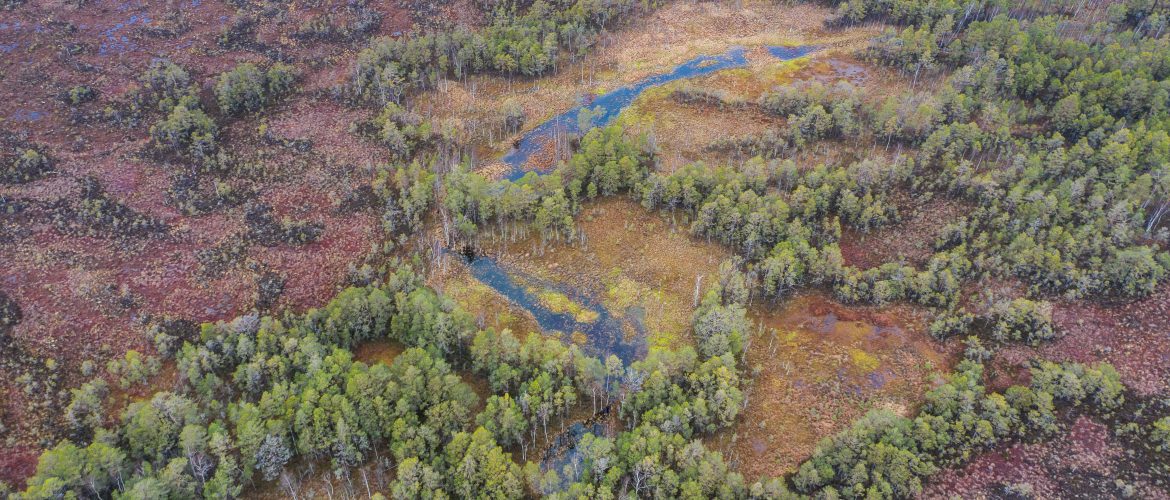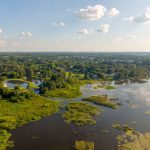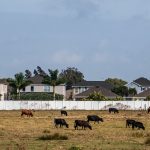Get the Lowdown on Credit Types and Mitigation Credit Classifications
Mitigation credit types refer to the type of mitigation being used, while credit classifications refer to the level of ecological value and function provided by the mitigation site. Together, these concepts help to ensure that mitigation credits are used in a way that effectively offsets the impacts of a project while also protecting and enhancing the environment.
These classifications bridge the gap between the scientific and regulatory world. The system provides a standardized, comprehensive, and consistent foundation for informed decision-making.
What is a mitigation credit classification?
Credit classifications refer to the different categories of mitigation credits based on factors such as the type of habitat, the location, and the level of ecological function and value provided by the mitigation site. For example, mitigation credits can be classified as “high quality,” “medium quality,” or “low quality.”
Jacksonville USACE credit classifications
In Florida, there are 9 Classification Categories covering 22 community types in Jacksonville USACE District. Cowardin classifications are the official credit classification used to trade and purchase environmental credits in Florida. This system is also used by the National Wetlands Inventory.
How does RIBITS handle credit classifications?
There is a formal classification system of the habitat-in-question set up in RIBITS (Regulatory In-Lieu Fee and Bank Information Tracking System). This method of classifying ecosystems and habitats is to try and achieve mitigation standards that keep overall ecosystem health while allowing for land use changes.
RIBITS is there to provide generic classifications and allow for USACE Field Offices and Districts to define further classifications for themselves. However, this definition does have to follow federally recognizable systems for classifying ecosystems. In RIBITS, you can find available credits by credit classification.
What are the different “credit types” in mitigation banking?
In addition to the system of credit classification, there are a variety of credit “types.” These credit types exist to give more details about the method of mitigation, regulation, jurisdiction, and ecological impact that the credit is categorized by. Different projects require a combination of credit types to achieve its goals.
Regulatory mitigation credit types
The system of mitigation banking is regulated by different state and federal laws. These laws are overseen by a series of agencies that have created permitting processes for eco-credits. One of the types of credits is based on regulations and shows at a glance which agency approved the credit.
- ERP: Environmental Resource Permit
- ESA: Endangered Species Act
- Section 404
Jurisdictional mitigation credit types
Mitigation credits can be typed by jurisdiction. Some projects require federal credits, some need state-approved credits, and others require a combination of both. State and federal credits are not mutually exclusive and can be used together to achieve a project’s mitigation goals.
- Federal
- State
Ecological mitigation credit types
Eco-credits can be sold to impact the habitat of an endangered species, the functionality of an entire ecosystem, or individual ecosystem functions. Areas can be assessed for more than one ecological credit type and are called multipurpose banks. Although selling two types in the same area for one permitted activity is a prohibited concept called double dipping.
- Conservation – Species & Habitat
-
-
- Sand Skink
- Scrub Jay
- Florida Panther
-
Methodical mitigation credit types
Mitigation credits can also be referred to by the methods of mitigation taking place at the bank site. This can reveal the general quality of the credits and functional lift at the site, which would impact the cost.
- Preservation
- Establishment
- Creation
- Enhancement
How were credit classifications created?
The Cowardin method is one of a few historical methods for classifying the ecological characteristics of ecosystems and their connectedness to the greater landscape. The other system that is popularly used in mitigation banking is the Hydrogeomorphic system.
At a quick glance, these coded credit classifications provide many ecological details about the environment being impacted. Ecological consultants can extrapolate the likely plant and animal species, water levels, and functions of a permit or mitigation site. This allows them to quickly compare the site in question with opportunities for impact nearby.
How to put together a credit classification
The Cowardin system uses multiple levels of classification to create a full credit classification. The higher, more general level describes where the habitat exists in the greater watershed. This first level is called a Cowardin System. The second layer is the Cowardin Sub-system, which identifies the substrate. The final layer is used to further describe the characteristics of vegetation and hydrology. This is called a Cowardin Class.
For example, a wetland habitat on the coastline would fall into one System, however it may have different dominant vegetation like mangroves or marsh grasses, and this would be clarified by the Cowardin Class. Or, it may have a rocky or unconsolidated substrate, defining the habitat on the Sub-system.
So, to make a full credit classification, we use the first category denoting place in the watershed followed by the second category describing substrate and the last grouping detailing vegetation and hydrology. Some examples would be Palustrine Forested, Palustrine Open Water, or Estuarine Intertidal Emergent.
What do credit classifications mean?
Within the Cowardin system, uplands are classified as “Terrestrial.” Wetlands are considered:
- Palustrine
- Lacustrine
- Riverine
- Estuarine
- Marine
The breakdown of Terrestrial, Palustrine, Lacustrine, Riverine, Estuarine, and Marine is all based on the area of the watershed that habitats occur in. This is meant to show us functions, like soil deposit, erosion control, floodbank mechanisms, and also to help us understand different species that make these areas home.
The further delineations on credit classifications such as Emergent, Forested, Intertidal, Open Water, & Scrub/Shrub describe the type of wetland within the first category by identifying the vegetation and hydrology.
The Cowardin Class and the Jacksonville USACE delineates on:
- Emergent: wetlands with herbaceous vegetation rooted in the soil
- Forested: wetlands with tree and shrub vegetation
- Intertidal: wetlands found along the coast and are characterized by saltwater and freshwater tidal influence
- Open Water: wetlands that are characterized by open water
- Scrub / shrub: wetlands with shrub vegetation.
Habitat Credit Classifications
Credit classifications may also be by species. If an impact on an endangered species is being made, that species becomes the name of the credit classification. For example, there are sand skink credits and Florida panther credits. The classification is the species name, while the credit type is “species.”
How credit classifications relate to other systems of classification
Because of the leeway allowed in choosing classifications and the number of different systems for defining ecosystem health and function, there is a lot more information on a credit classification than just the Cowardin one. It also describes:
- community types with typical vegetation and other identifying descriptors,
- related HGM or hydrogeomorphic type,
- FLUCCS crosswalk codes,
- assessment method.
How do credit classifications and types go together?
Let’s take the example of an “estuarine, intertidal, emergent” credit to further break down this system of credit classification & types.
The credit classification “estuarine, intertidal, emergent” could be a “404 credit,” as well as a “state credit,” and maybe also a “establishment credit.” All of the “types” can be true of the same credit. However, the classification will always be specific to the function of the habitat in question.
Each word in this classification refers to a different aspect of the habitat and ecological function:
Estuarine: located in the transition zone between rivers and the sea and are characterized by saline conditions that change with the tides. These habitats provide important ecological functions such as water quality improvement, shoreline stabilization, and nursery grounds for fish and shellfish. Estuarine habitats are considered to have a high ecological function and value.
Intertidal: located along the shoreline and are exposed to the tides. These habitats have plants with strong root systems, which hold together substrate and withstand the power of tidal forces without being uprooted. Animals, like many mollusks, adapt to air and water exposure, surviving when the tide is out and also when it is and they are submerged under water. Intertidal habitats are considered to have a high ecological function and value.
Emergent: refers to habitats that are characterized by the presence of emergent vegetation, which are plants that have their roots submerged in water but their leaves and stems extend above the water surface. Emergent habitats are considered to have a high ecological function and value.
Credit classifications and types impact decision-making
Credit classifications refer to the categorization of credits based on the level of ecological value and function of the mitigation site, while credit types refer to the specific type of mitigation being used. The RIBITS system provides a standardized way of classifying habitats and ecosystems for eco-credit verification.
Understanding these concepts is important for developers to ensure that the credits they are using are accepted by regulatory agencies and that they are using the correct type of credit for the specific impact they are trying to offset.
It allows scientists, resource managers, and regulatory agencies to accurately identify and describe these ecosystems, track changes over time, and evaluate the impacts of human activities.











